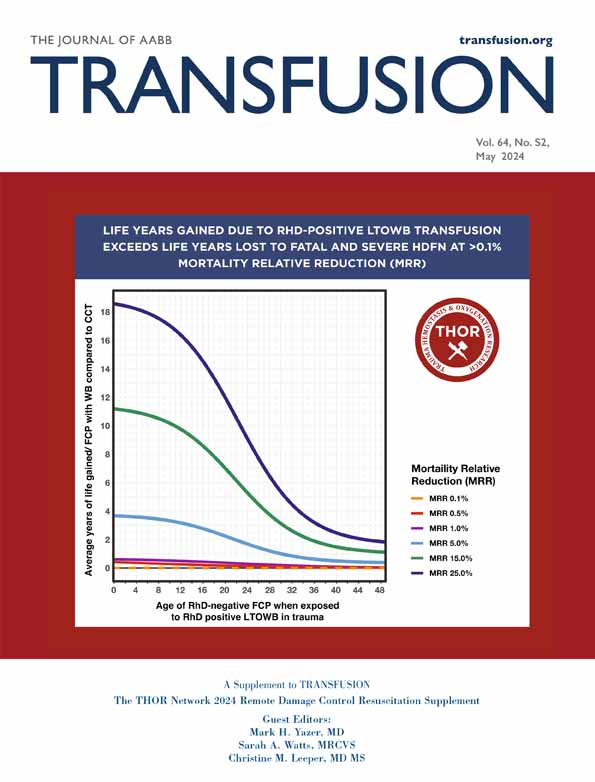Drawing and storing blood using a 3D printed bottle cap and a disinfected 500 mL drinking bottle: A proof-of-concept study
Abstract
Background
Today, with wars raging in Ukraine and the Middle East, the demand for blood is high. Despite this, few companies produce the necessary equipment to draw, store, and transfuse whole blood. This study evaluated the safety and performance of a 3D printed bottle cap in conjunction with a water bottle and some available consumables to draw and store fresh whole blood.
Study Design and Methods
Bags of saline, and freshly donated whole blood, was transferred to the water bottle through a 3D printed bottle cap and stored for 72 h. An identical setup, transferring saline to a Terumo blood collection bag was used as control. Performance and safety were evaluated by calculating infusion rate and observing for backflow, respectively. The blood was also tested for hemolysis and bacterial growth at four sampling points.
Results
The cap-and-bottle setup was faster than control in terms of flow rate when transferring saline (1.53 vs. 1.81 mL/s, p < .001), and non-inferior to saline control when transfusing blood (1.53 vs. 1.49 mL/s, p = .641). We did not observe any risks of causing the donor iatrogenic harm, and there was no evidence of increased hemolysis. However, there were traces of bacterial contamination in three of six bottles.
Conclusion
This study indicates that drawing blood is both feasible and safe, utilizing a 3D printed cap and bottle setup. Flow rate was faster than control, and mechanical properties of the blood were not affected. We were unable to determine the source of bacterial contamination in the blood.
CONFLICT OF INTEREST STATEMENT
The authors have disclosed no conflicts of interest.




